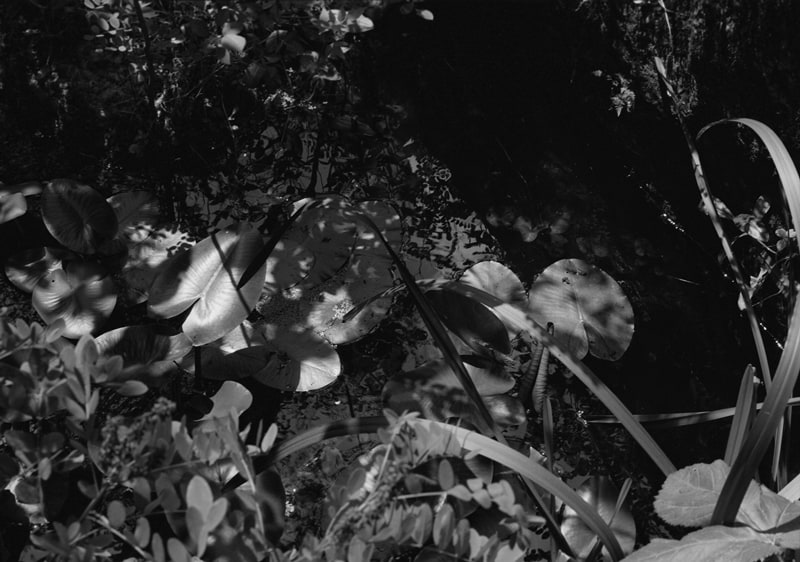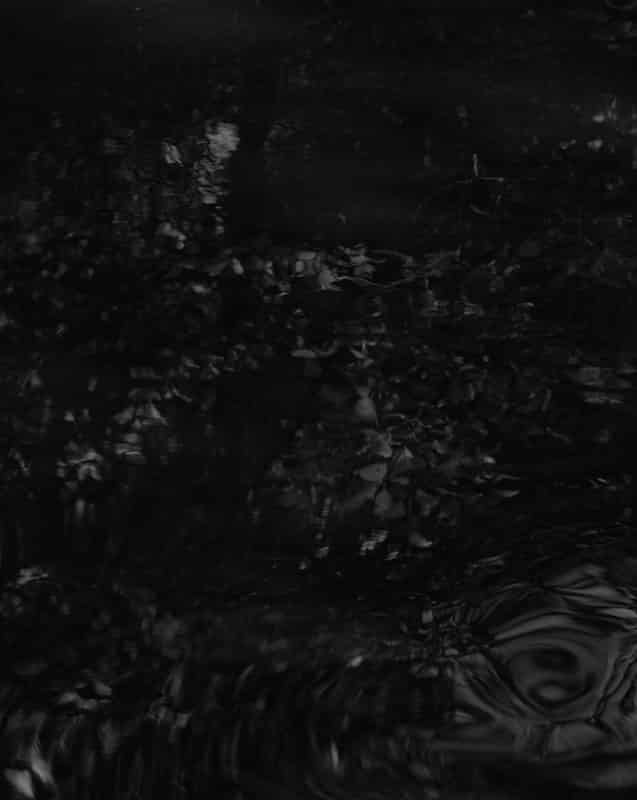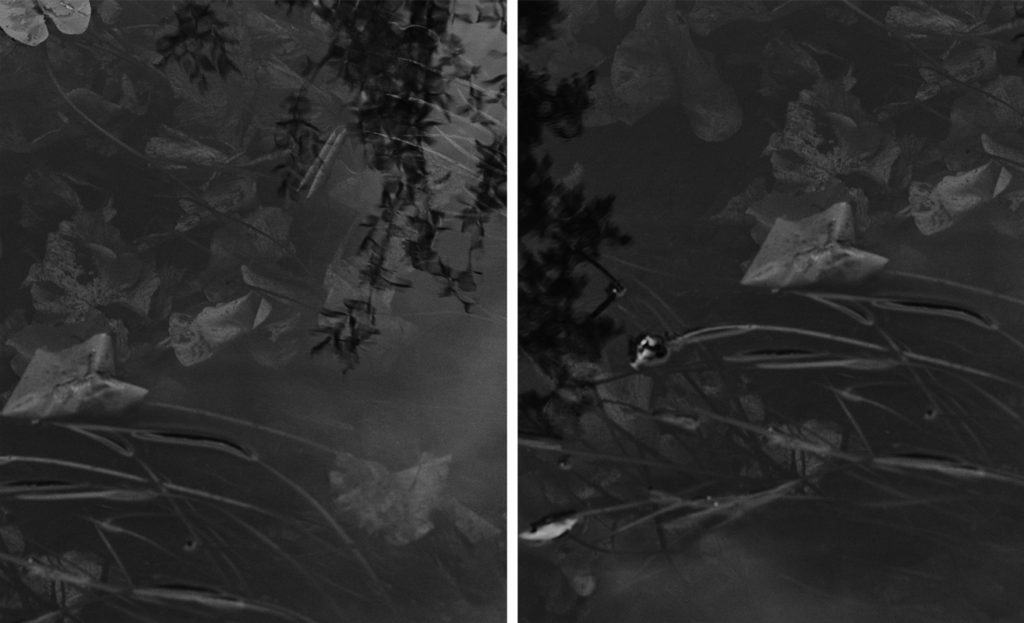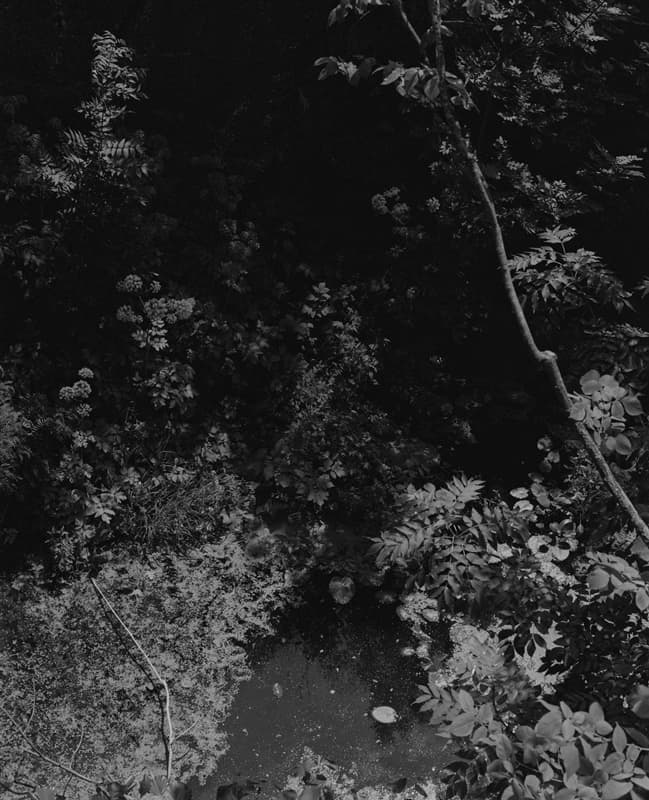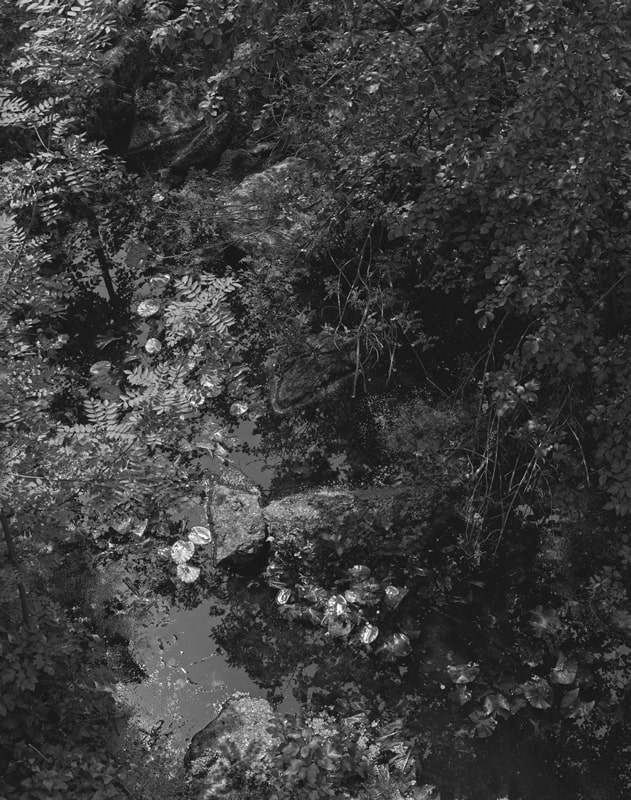Lagoons, 2020.
From late spring to early autumn, I go on lonely expeditions to Ros River – to the places of ancient igneous rocks outcrops dating back to prehistoric times of geological and cosmic catastrophes that formed the Earth several billion years ago. On this area of Ros river valley, the landscape is rocky and indented, dangerous and unpredictable, the flow is fast and the river branches forming islands and small lagoons created by an gathering of granite boulders. Each of which has its own inner climate and the world of the beings inhabiting them. Travelling on water, where the river is shallow and the stream allows you to move with equipment, I discover new quiet fluvial worlds that coexist with each other. I stay there for a long time while observing a riverine grasses flowering beginning and their wilting, full-flowing periods of the river, when life meanders in its depths, and the times of shallowness, when submersed parts of river flora rise above the water surface. Their stems, their skeletons protruding from the plant flesh’s rags and the lumps of rock blocking the river course encouraged me to discover landscapes or an architectonics of the “another” river – not a flux, but rather a ridge, a living fossil record.
‘Lagoons’ is an archive of expedition materials that I gradually work on. I like the Iranian philosopher Reza Negarestani’s reading of the Freudian metaphor for life as a lagoon. The life forms are lagoons temporarily protecting themselves from the outside world that created them and will eventually destroys them. Lagoon is the memory of life about its origin, organized as oblivion. Another sources of inspiration is an idea of a spine as a petrified relic, the journey throught connects you with the past and the future of the Earth – an idea that British intellectual historian Thomas Moynihan finds in culture: in ‘spinal landscapes’ of science fiction writer James Graham Ballard or in the works of anthropologist Elaine Morgan.
